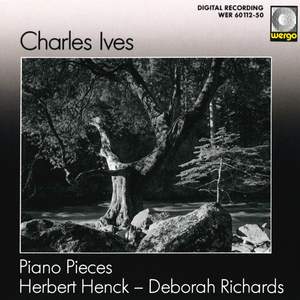In addition to his two piano sonatas, the most extensive compositions among his works, Ives wrote a series of shorter piano pieces of which those that have been published are collected on this recording. United in such a manner, they present a kind of cross-section of Ives’ compositional output setting in relief at the same time several characteristics of his music. Marches, chorales, ragtimes, waltzes, popular American songs, classical quotations, sounds that recede and sounds that approach from the distance, thickly woven contrapuntal movements, seriousness, wit and high spirits, melancholy, pathos and irony, they all find themselves in an often colourful, inimitable mixture, often in the same piece, often in provoking juxtaposition. Cross-connections between the individual pieces as well as between them and others of his works are portraits, as obvious as they are characteristic, of a compositional technique that as strongly resisted the exclusion of any kind of musical materials as it was effortlessly able to integrate them. Such an approach to traditional styles and subjects, formal construction, playing techniques, form types, tuning systems, or conventions of performance, incorporating these materials to the point of disintegration, sometimes in abrupt confrontation, gives his music character and stature, and identifies Ives as one of the truly experimental composers of our century whose ideas have since been carried on in an even broader and more radical sense by John Cage.



